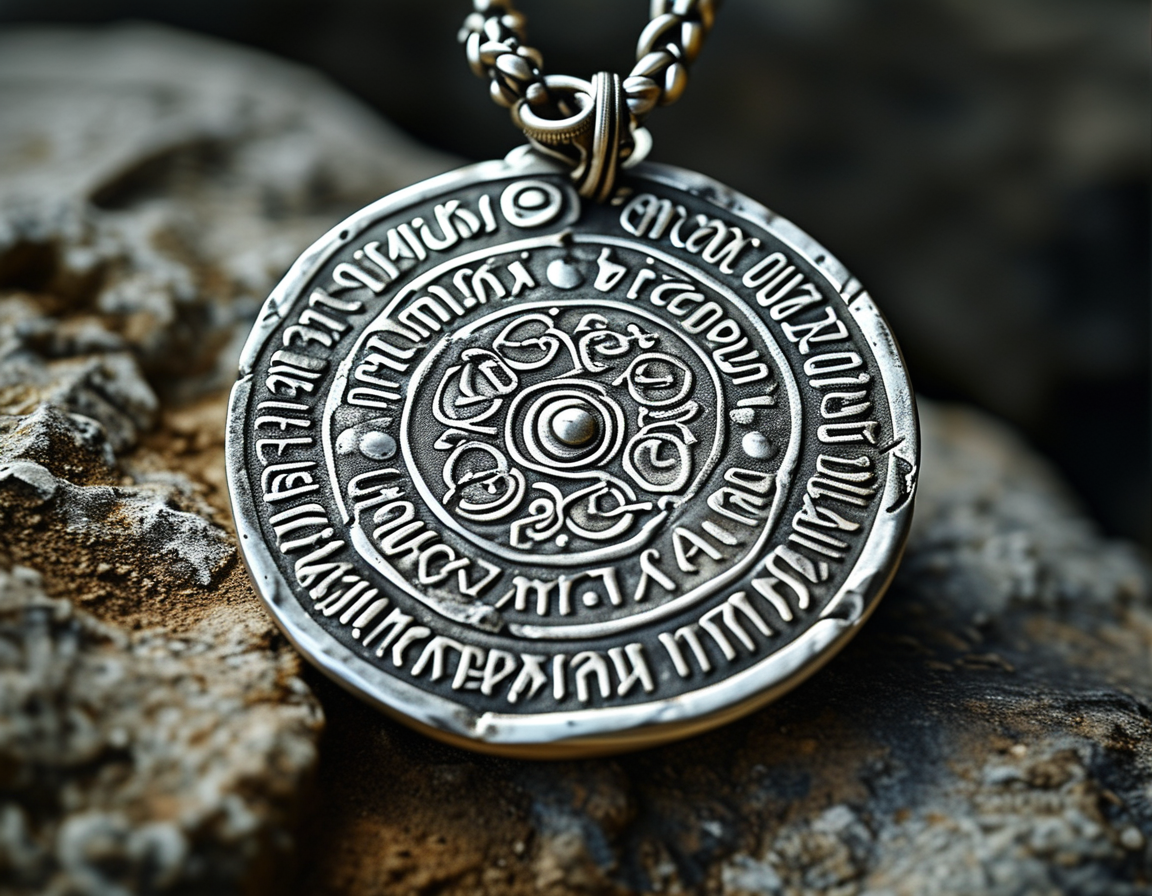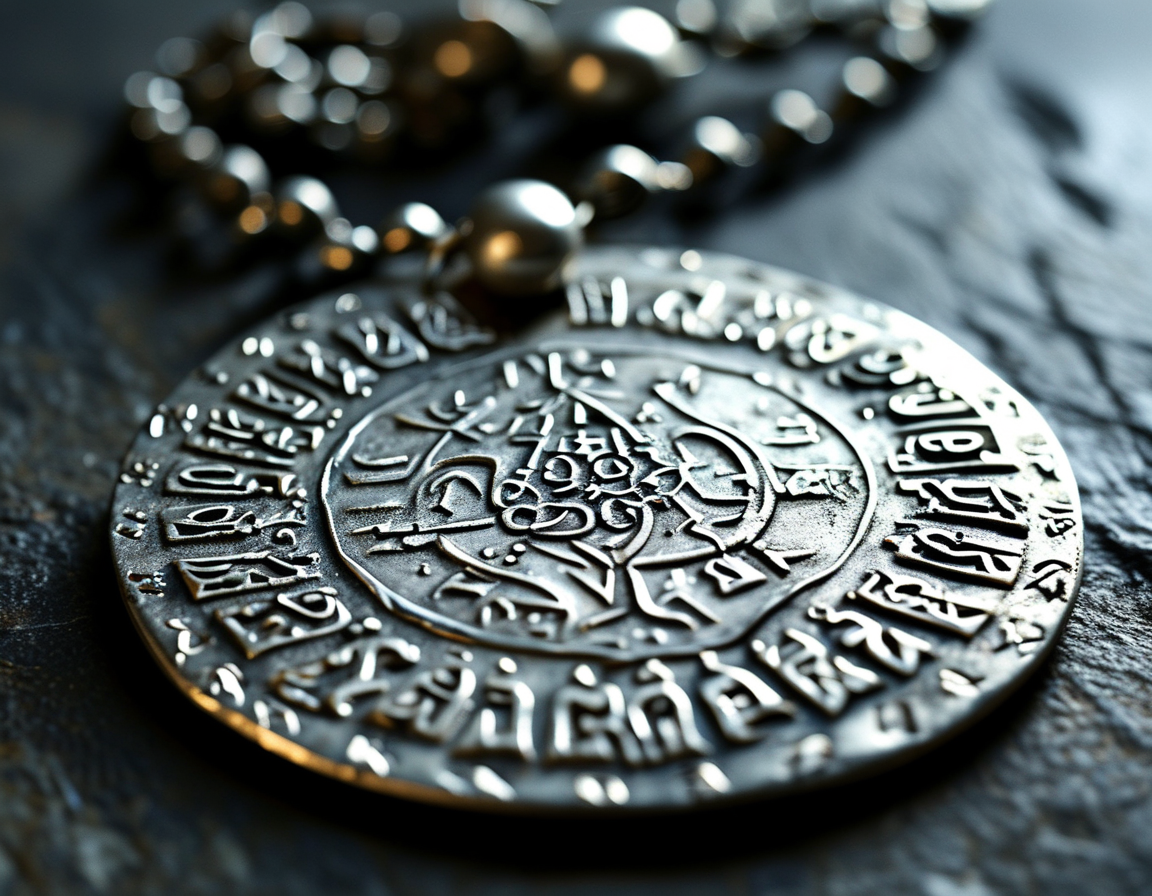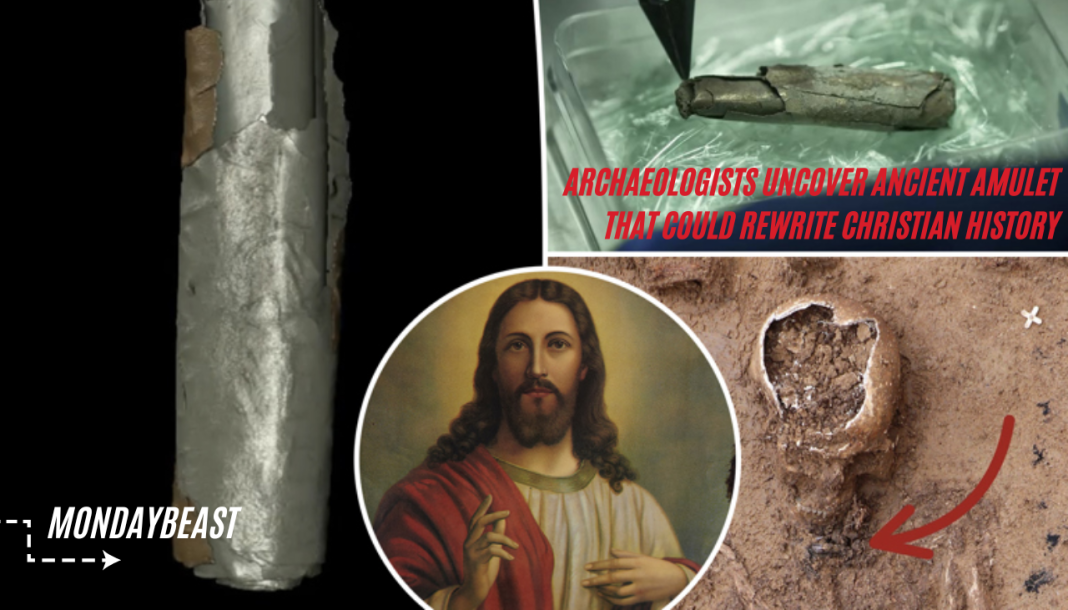Recent archaeological discoveries can shift our understanding of history.
Imagine holding a silver amulet that dates back 1,800 years.

This extraordinary find might change everything we think about Christianity’s early days.
The discovery, made in Frankfurt, is fascinating.
It challenges previous beliefs about when Christianity spread north of the Alps.

With an inscription of 18 lines, it reveals something profound.
How did a piece of silver foil come to hold such weighty significance?
The amulet was found in a grave dating to the third century A.D.

It came from an ancient Roman cemetery in Nida, now Frankfurt.
Such finds are rare and precious windows into the past.
This amulet, resting beneath the chin of its wearer, tells a story.
The expert team uncovered a grave with the silver amulet in 2018.
They unearthed this phylactery, worn as a protective charm.
Only later did it reveal its mystery through cutting-edge technology.
After careful restoration, the inscription emerged, beautiful in its significance.
But how is modern science helping us unlock these mysteries?
Using advanced methods, researchers scanned the delicate foil.
Thanks to computer tomographs, they created a 3D model.
This model allowed experts to explore the fragmented text.
So, what were they able to decipher?
The inscription speaks of devotion to Jesus Christ.
The Frankfurt Inscription includes calls to Saint Titus.
It depicts a bold faith in a time of peril for Christians.
Christianity faced skepticism, even aggression, from the Roman authorities.
This amulet shows the deep commitment of believers like the man buried with it.
Can you imagine wearing your faith as such a bold statement?
Aspects of the text are rare for the era.
With phrases like ‘holy, holy, holy’, it invites contemplation.
How does the mention of Saint Titus reshape our understanding?
It’s truly remarkable that faith remains relevant through centuries.
The scholarly work continues, piecing together the fragments of belief.
The city’s officials recognize the significance of this discovery.
Mike Josef, Frankfurt’s mayor, emphasizes its historical importance.
This moment allows us to reflect on Christianity’s journey.
What was it like to be a follower of Jesus so long ago?
The amulet now stands as a symbol of early devotion.
It connects us to the lives of people long since passed.
Just as we mark our beliefs today, so too did this man.
There’s something humbling about this link through time.
Frankfurt can now take pride in such a pivotal find.
The community and researchers are buzzing about the implications.
What questions does this discovery raise about our past?
It opens up new avenues of interest for scholars and believers alike.
Could this illuminate pockets of faith previously overlooked?
This amulet signifies more than relic; it is a connection.
It’s a testament to faith that persevered against the odds.
The narrative of Christianity continues to unfold in surprising ways.




